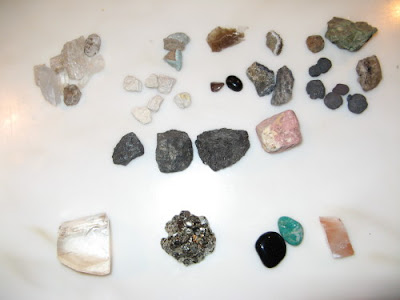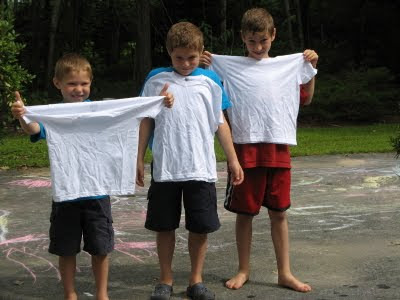
We are taking up earth science at our house this year, and we are exploring it with our small co-op (3 families, 11 children under age 11, 8 of which are school-aged) We have had a lot of fun so far investigating geology, so I thought I would share some of my resources.
I am using
Be Your Own Rock & Mineral Expert by Michele Pinet as our spine. This thin hardcover works well to outline lessons, including activities. It is particularly good at describing techniques and making tools for rock hunting, and then for testing samples. You will need other sources for specific identification. Unfortunately this book is out-of-print and quite expensive; my copy is from our library. This is actually geared to high school kids but it is easy enough to adapt.


I have found several wonderful living science books, most of them written 20 or more years ago. Many of these, however, are still in print and some have even been updated! In fact, the only two on this page that are out of print are the books by Pinet and Selsam.


Some of these are strictly about rocks and minerals while some relate to the rock cycle or the earth's composition. I find it helps kids understand and distinguish igneous, sedimentary, and metamorphic rocks. One of our


family's favorite authors is Milliscent Selsam, and
A First Look At Rocks is no exception. The black and white pictures have obvious limitations, but the writing is just spectacular juvenile science. The book is a great introduction to the three types of rocks and the characteristics of each, so you can go out and start classifying your finds. Her books, unfortunately, are out of print


but they are readily available on the used book market. Another favorite of ours are books from the
Let's Read and Find Out series; two of them relate to our geology study.
As for actual pictorial identification, rock and mineral books are plentiful on

library shelves. We happen to like the Basher Science books because they are so whimsical, the information is in bite-sized pieces, and my kids love to look at them, and the newest addition is
Rocks and Minerals: A Gem of a Read.
We have subscriptions to
Discovery Streaming, which has many related videos, though I liked the ones from United Streaming that I could link to for free from this neat site about the rock cycle called
Rocks to Soil.
We also use
Explore Learning, which has some great Gizmos. The
Rock Classification Gizmo and the
Rock Cycle Gizmo and the
Mineral Identification Gizmo all fit right into our study. You can try them for 5 minutes at a time for free each time you visit the site, and
Homeschool Buyer's Co-op is currently offering a group buy.
Our little class is about to move on to collecting and testing sample. I even bough a small amount of HCl from Home Science Tools for when we get to mineral identification. I hope the weather doesn't get too cold yet!
UPDATE
How could I forget these three wonderful books (thanks Jennifer!):



 I found Try Engineering looking for some fun interactive games for my kids on the web. The site is for people interested in engineering careers and so has a lot of information about careers and schools.
I found Try Engineering looking for some fun interactive games for my kids on the web. The site is for people interested in engineering careers and so has a lot of information about careers and schools.






































